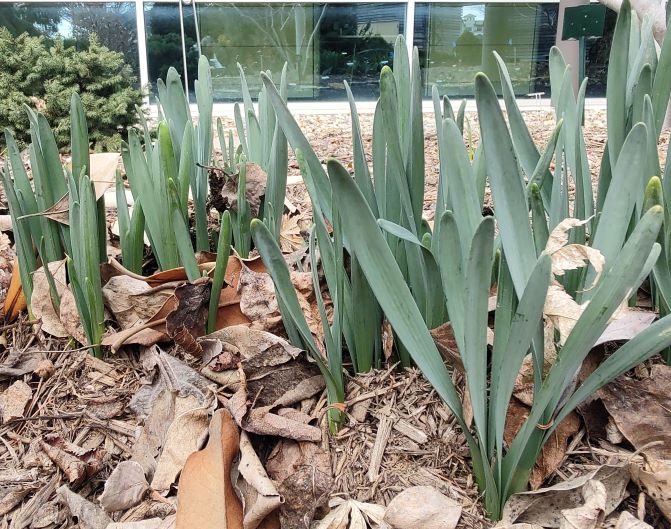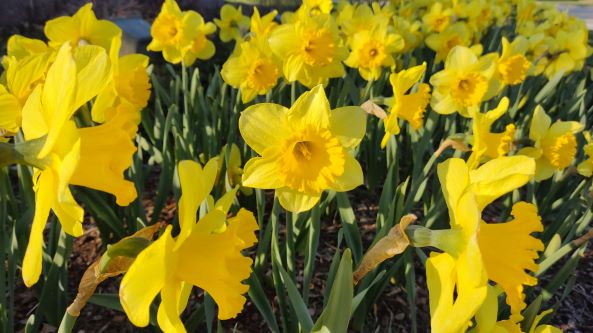Caring for Spring Bulbs

Sitting outside my office window, tucked away in inconspicuous landscaping, I’ve watched as tiny tufts of blue-green foliage pop up from the ground over the last couple of weeks. The daffodils aren’t supposed to be in this particular spot. The plant life surrounding our office building is meant to be ‘an example of native flora.’ Narcissus, cheerful and pretty as they are, are native to northern Europe.
Nevertheless, this mandate did not deter a certain green-thumbed rebel savant rockstar of the past who shall remain unnamed. Somehow, they worked their magic and snuck the plants in. Winters here are harsh, and they knew all too well the benefits that accompany spring color. There’s something to be said about ornamental plants that introduce color and color into a colorless world. Even after the bluest of winters, they remind us spring will return.
A few factors should be considered when caring for spring bulbs as they bloom in the coming weeks and months. As with all plants, proper watering, fertilization, and planning for next year ultimately helps optimize their performance.
When watering bulbs, aim to supply moist but not saturated soil, and remember that bulb rot is a common disease that will quickly equate to plant death with too much moisture. On the safer side, it is better to allow the soil to become slightly dry between waterings of spring bulbs, like how one would water cacti or succulents, but to a lesser extreme.
When fertilizing spring bulbs, the important factor to remember is they need to be fed before they begin flowering. Fertilized after a bloom has formed, the plants are already dying back for the year and no longer actively growing. Thus, any fertilizer put down will only benefit plants grown in that location afterward.
If you have not performed a soil test on your garden area to know the precise nutrients that are currently lacking, a process your local Extension office can help accommodate, a general low-range slow-release fertilizer such as a 13-13-13 will suffice for feeding the plants. In most bulb gardens, nitrogen will be the most essential supplement requiring refurbishment in the spring, as this nutrient is actively utilized and used up by growing plants. Spring bulbs, however, will also require an ample supply of phosphorus for root and bud development. This will become essential if aiming to have your bulbs perennialize.
Another maintenance must when aiming for perennialization will be allowing the bulbs' foliage to die back to the ground after the plants have completed flowering and blooms have dropped. The nutrients still contained within the leaves will redirect, back down into the bulbs, giving them enough energy to root and regenerate through the coming growing season and following winter. Bulbs, properly nourished, will herald the arrival of spring yet again.

Anthony Reardon, Johnson County Horticulture Small Farms Agent
Have questions?
The Garden Hotline is staffed by trained EMG volunteers and Extension staff who will assist you with questions.
Phone: (913) 715-7050
Email: garden.help@jocogov.org